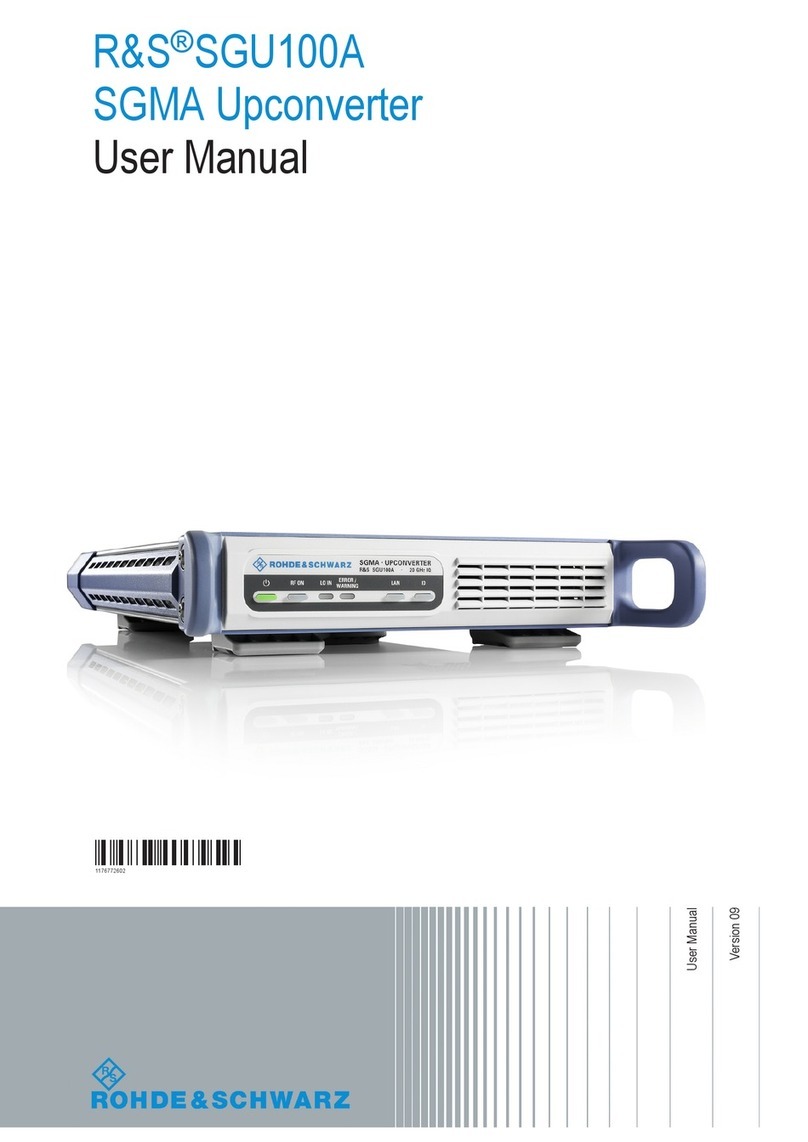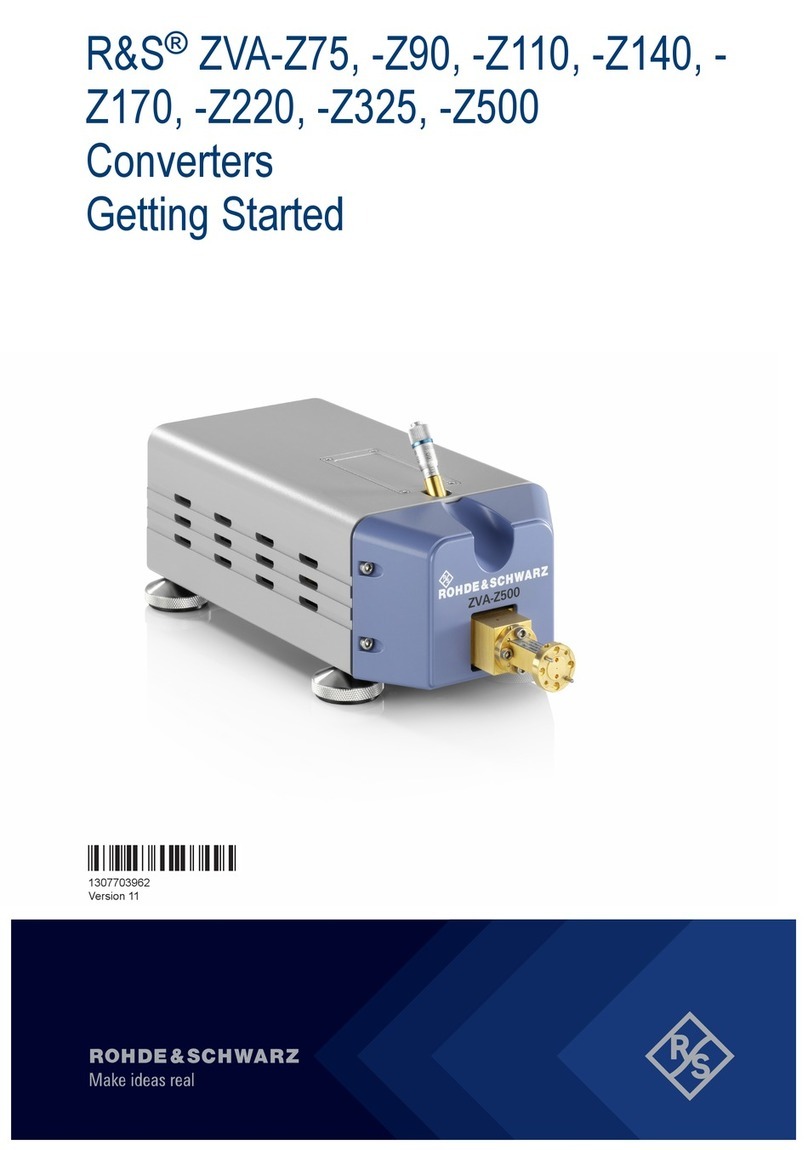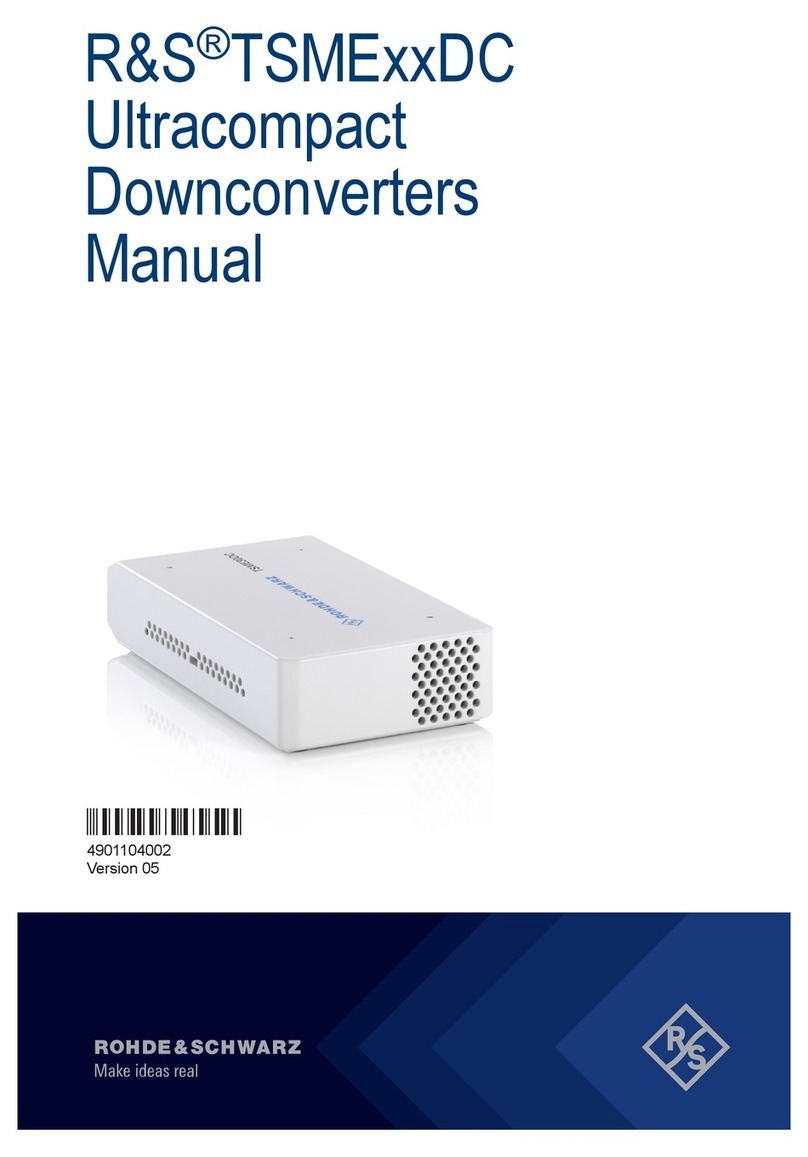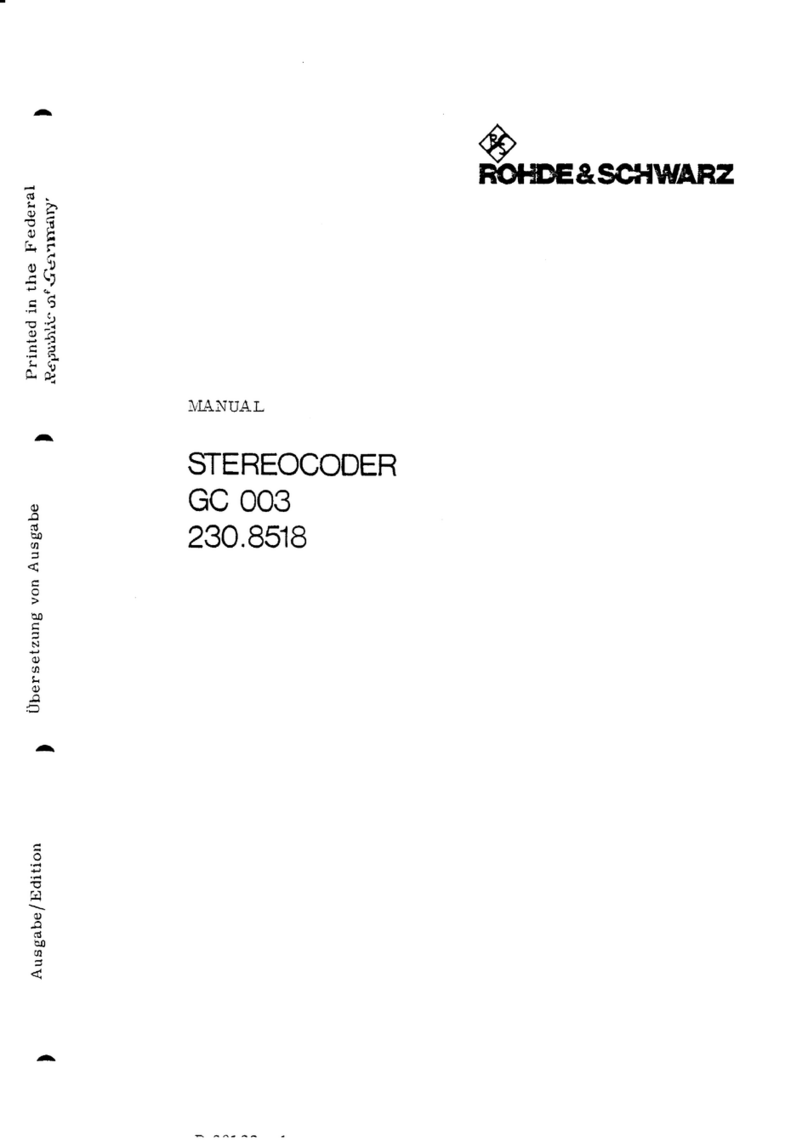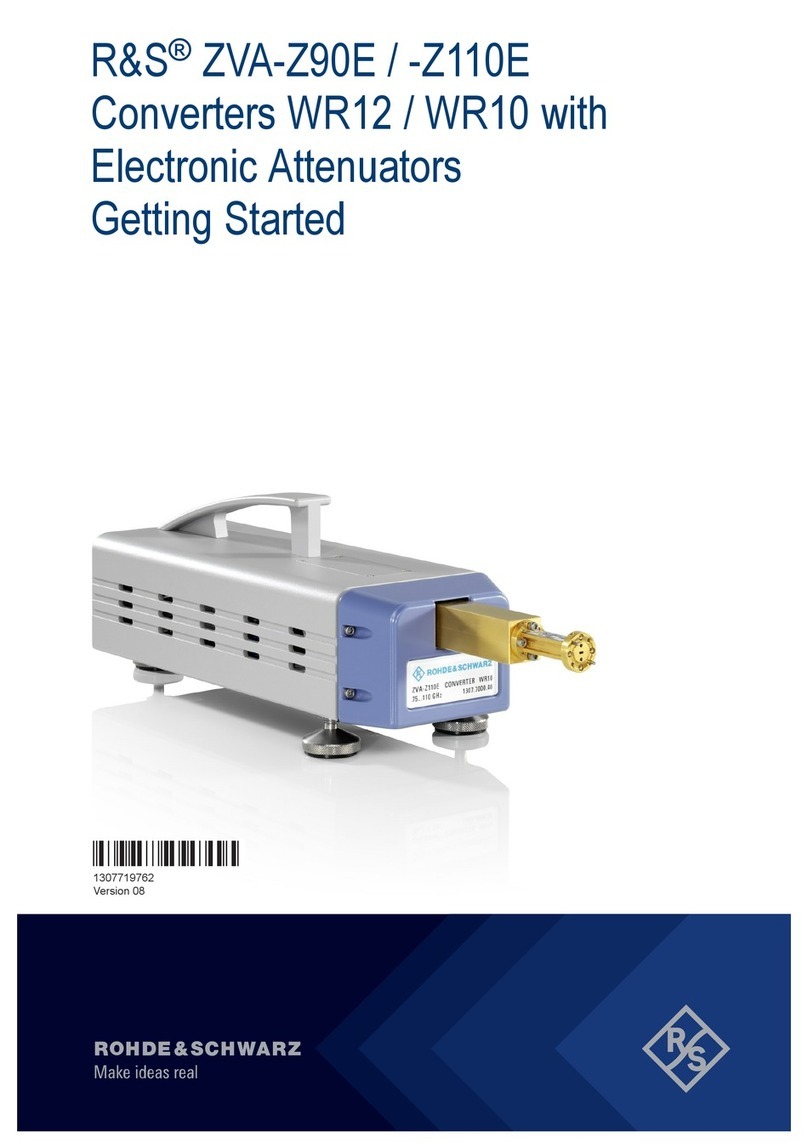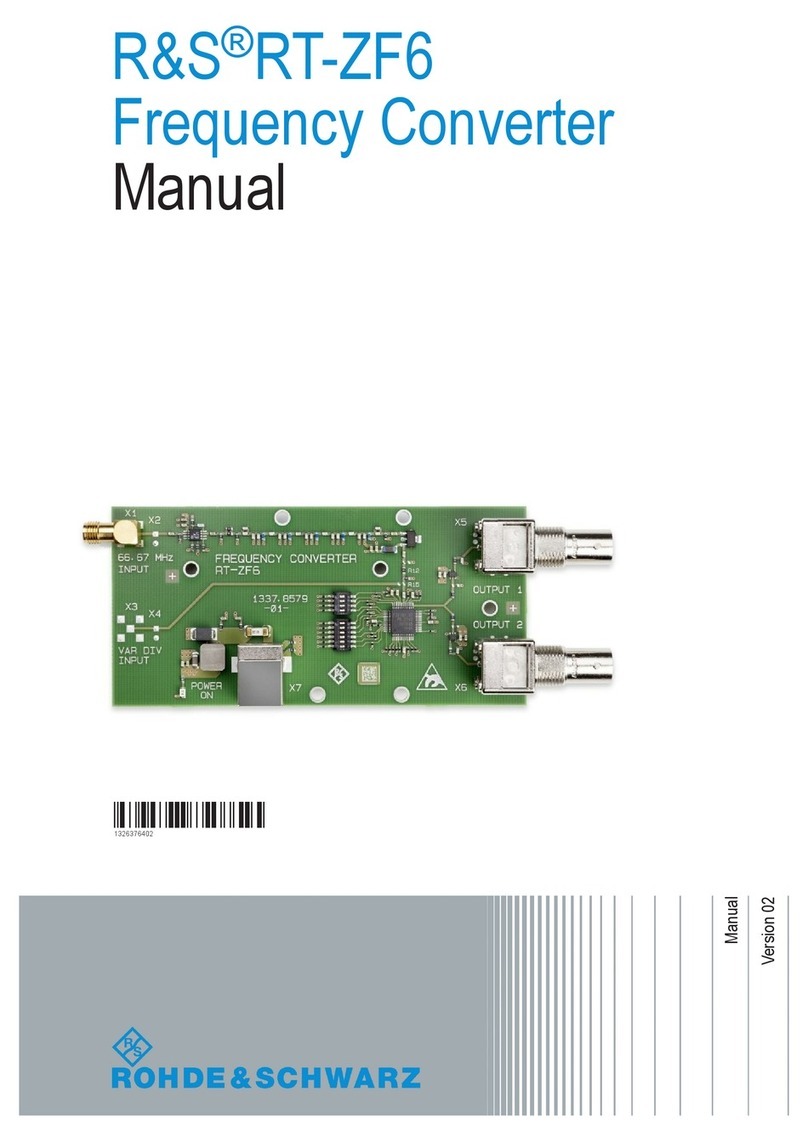
Leveling ProcedureSoftware Utility
6Getting Started 1331.3069.02 ─ 03
2 Leveling Procedure
The purpose of frequency converter leveling is to determine the nominal RF input
power PRF-In at the converter input that is required to generate a particular RF converter
output power PRF-Out at (output) frequency f.
To achieve this, the RF output power is measured on a "leveling grid", i.e. at equidis-
tant RF input power levels PRF-In, i and frequencies fj. Two-dimensional interpolation is
then used to obtain the appropriate input level for the desired output level at a given
frequency. Selecting smaller step sizes can improve the interpolation accuracy, at the
cost of an increased leveling duration.
For each frequency converter port, the leveling procedure consists of the following
steps:
1. Reference receiver calibration
During this step, connect a power meter to the test port of the respective frequency
converter. The calibration consists of a single frequency sweep f1, ..., fn during
which PRF-Out(fj) and PREF(fj) are recorded, where PREF(fj) denotes the power mea-
sured by the VNA reference receiver.
The sweep is performed at the frequency converter's maximum RF level, which is
typically advantageous w.r.t. measurement time and accuracy at the power meter.
For the subsequent steps, the correction factors c(fj) = PRF-Out(fj) - PREF(fj) (on loga-
rithmic scale) are assumed to be independent of the input power level PRF-In.
2. RF input power calibration
This is the actual leveling step, i.e. for each point on the leveling grid, the RF out-
put power PRF-Out(PRF-In, i,fj) is determined.
However, during this step it is sufficient to measure the reference receiver power
PREF(PRF-In, i,fj), which can be performed much faster and with a much higher
dynamic range compared to measuring the RF output power using a power meter.
With the correction factors c(fj) obtained in step 1, the RF output power can then be
calculated as PRF-Out(PRF-In, i,fj) = c(fj) + PREF(PRF-In, i,fj) (on logarithmic scale). The
power meter is no longer required.
3. Waveguide attenuator calibration (E-type frequency converters only)
This is a mandatory step for frequency converters with electronic attenuators (E-
type converter) that are controlled by a R&S ZVA or R&S ZVT via option R&S ZVA-
B8 (see Chapter 3, "Required Equipment", on page 8).
The Leveling Tool records the characteristic of the converter's electronic waveguide
attenuator. The procedure is similar to that of step 2. The power meter is not
required!
